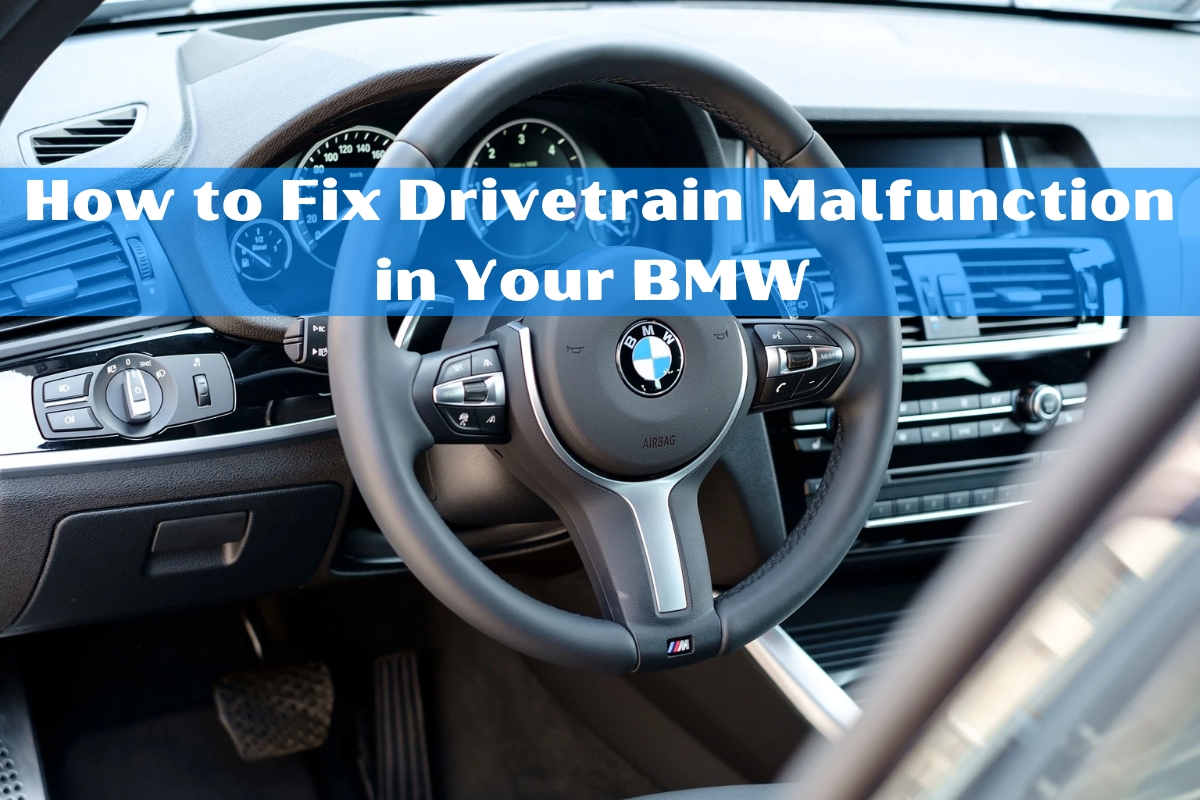How to Fix Drivetrain Malfunction in Your BMW

As a BMW owner, you know the thrill of driving a high-performance, precision-engineered vehicle. But what happens when that smooth, powerful ride is interrupted by a dreaded “Drivetrain Malfunction” warning light on your dashboard? Don’t worry, we’ve got you covered.
In this comprehensive guide, we’ll dive deep into the common causes of drivetrain malfunctions in BMWs, equip you with the knowledge to diagnose the issue, and walk you through the steps to get your Bimmer back in top shape. By the end, you’ll have the tools to tackle this problem head-on and prevent future drivetrain headaches.
Understanding Drivetrain Malfunctions in BMWs
The drivetrain in your BMW is the heart of what makes your car move, transferring power from the engine to the wheels. When this critical system experiences a malfunction, your BMW’s engine control module (ECM) will detect the issue and activate a safety mode to protect your vehicle from further damage.
This safety mode, often referred to as “limp mode,” will limit your BMW’s top speed to around 40 mph. While this can be frustrating, it’s a fail-safe measure designed to prevent more serious problems from arising while you get your car to a repair shop.
Uncovering the Common Causes
There are several potential culprits behind a drivetrain malfunction in a BMW. Let’s take a closer look at the most common causes:
1. Worn-Out Drivetrain Components
Over time, the various parts that make up your BMW’s drivetrain, such as the transmission, clutch, ignition coils, spark plugs, or differential, can become worn or damaged, leading to a malfunction.
2. Low Engine Oil Level
Insufficient engine oil can cause a variety of problems, including drivetrain issues. When the oil level is low, the engine and other components may not receive the proper lubrication, leading to increased wear and tear.
3. Transmission Fluid Leaks
A leak in the transmission fluid can cause the level to drop, which can disrupt the proper operation of the transmission and result in a drivetrain malfunction.
4. Clogged Catalytic Converter
The catalytic converter in your BMW plays a crucial role in the exhaust system, converting harmful emissions into less harmful substances. If the catalytic converter becomes clogged, it can restrict exhaust flow and cause drivetrain problems.
5. Faulty Fuel Injectors
Malfunctioning fuel injectors can disrupt the fuel-air mixture, leading to a decrease in engine performance and potential drivetrain issues.
6. Blown Head Gasket
A blown head gasket can cause a range of problems, including coolant leaks, engine overheating, and drivetrain malfunctions.
7. Fuel Pump Problems
Issues with the high-pressure fuel pump, such as a failure or reduced output, can result in a loss of power and a drivetrain malfunction.
Diagnosing the Problem
If you encounter a drivetrain malfunction warning in your BMW, follow these steps to diagnose the issue:
- Restart the Engine: Turn off the engine and wait 5-10 minutes before restarting. This simple step can sometimes reset the computer system and clear the problem.
- Inspect the Engine: Take a closer look under the hood for any signs of leaks, unusual noises, or other indications of potential issues.
- Scan for Error Codes: Use an OBD-II scanner compatible with your BMW to read any diagnostic trouble codes. This can help you identify the specific cause of the malfunction.
- Replace Faulty Components: Based on the diagnostic codes, replace any worn or damaged parts, such as spark plugs, ignition coils, fuel injectors, or the catalytic converter.
- Service the Transmission: If the issue is related to the transmission, have it serviced by a BMW specialist, including a fluid change and inspection of the internal components.
- Consult a BMW Mechanic: If the problem persists or you’re unsure of the cause, take your BMW to a qualified BMW mechanic for further diagnosis and repair.
Fixing the Drivetrain Malfunction
Once you’ve identified the root cause of the drivetrain malfunction, you can take the necessary steps to fix the issue. The specific repairs will depend on the underlying problem, but here are some common solutions:
Replacing Spark Plugs, Ignition Coils, or Fuel Injectors
If the diagnostic codes indicate issues with the ignition system or fuel injectors, you’ll need to replace the faulty components. This can help restore proper engine performance and resolve the drivetrain malfunction.
Addressing Transmission Issues
If the problem is related to the transmission, a fluid change or more extensive repairs may be necessary. It’s best to have a BMW specialist handle any transmission-related work to ensure it’s done correctly.
Replacing the Catalytic Converter
A clogged or damaged catalytic converter can cause a drivetrain malfunction. Replacing the catalytic converter can help resolve the issue and restore proper exhaust flow.
Resolving Fuel System Problems
Issues with the fuel pump, fuel injectors, or fuel quality can all contribute to a drivetrain malfunction. Addressing any fuel system problems, such as replacing a faulty fuel pump or cleaning the fuel injectors, can help fix the problem.
Preventing Future Drivetrain Malfunctions
Proactive maintenance is key to keeping your BMW’s drivetrain in top shape and avoiding future malfunctions. Here are some steps you can take:
- Change Engine Oil and Transmission Fluid Regularly: Follow the manufacturer’s recommendations for oil and fluid changes to ensure your drivetrain components are properly lubricated.
- Use High-Quality Fuel and Additives: Filling your BMW with high-quality fuel and occasionally using fuel system cleaners can help keep the fuel system in good condition.
- Inspect Spark Plugs and Ignition Coils: During regular service intervals, have your BMW’s spark plugs and ignition coils inspected and replaced if necessary.
- Monitor Catalytic Converter Condition: Keep an eye on the condition of your BMW’s catalytic converter and replace it if it becomes clogged or damaged.
- Address Engine and Transmission Issues Promptly: If you notice any issues with your BMW’s engine or transmission, have them addressed right away to prevent further damage and potential drivetrain malfunctions.
By staying on top of preventative maintenance and addressing any problems as they arise, you can help ensure your BMW’s drivetrain continues to operate at its best and minimize the risk of costly repairs down the road.
Conclusion
Dealing with a drivetrain malfunction in your BMW can be a frustrating experience, but with the right knowledge and approach, you can get your vehicle back on the road quickly and safely. Remember, the key is to diagnose the issue correctly, address the underlying problem, and take preventative measures to avoid future malfunctions.
By following the steps outlined in this guide, you’ll be well on your way to resolving your BMW’s drivetrain malfunction and enjoying the performance and reliability that your Bavarian-engineered vehicle is known for. Don’t hesitate to reach out to a qualified BMW mechanic if you need any additional assistance. Happy driving, fellow BMW enthusiast!Copy






